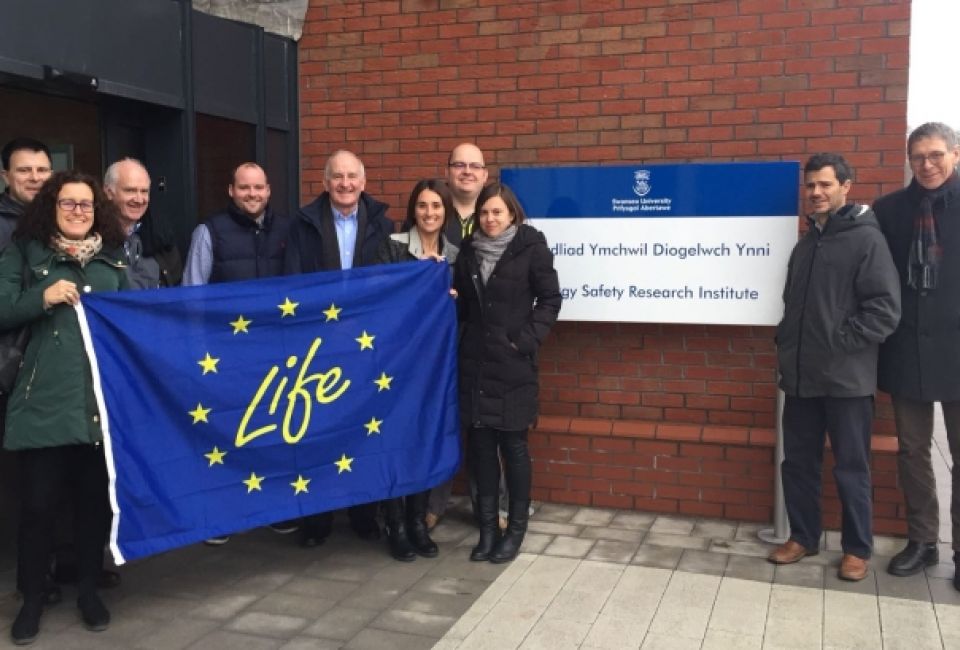
The BETA Technological Centre leads an European project to reduce the impact of abandoned mines on rivers
Effluents from abandoned mines may contain high concentrations of heavy metals or salts, which leak through the soil and end up in rivers, where they have a heavy impact on the biodiversity and functioning of those ecosystems. The primary objective of the European Life DEMINE project is to reduce the impact of these mining effluents by applying a new treatment before they reach the river. The project is being led and coordinated by the Technology Centre for Biodiversity, Ecology and Technology, and Environmental and Food Management (BETA) at the University of Vic - Central University of Catalonia (UVic-UCC).
Life DEMINE has received European Union funding through its Life programme, and has an overall budget of 2,184,632 Euros. Four other partners as well as the BETA Technological Centre are involved: the University of Swansea (United Kingdom), ELENTEC LTD, a company specialising in water treatment technologies (United Kingdom), the Groundwater Studies Centre in Dresden (Germany), and the Government of the Principality of Asturias (Spain).
There are currently around 3,460 closed and abandoned facilities containing mining waste in the European Union, according to figures from the European Commission. In fact, the extraction and processing of minerals is one of the most important sources of waste in the EU: in 2014, it amounted to 28.1 million tonnes, a figure that accounts for almost 30% of the total waste generated in Europe.
Demonstrating the effectiveness of an innovative treatment
The investigation began last July, and will continue until 2021. For four years, the project will work towards demonstrating the effectiveness of this innovative and versatile treatment, based on the combination of electrocoagulation technologies and membranes, which are already in use separately for various purposes. For the first time, tests will determine whether their combination improves the efficiency of the treatment of mining effluents, and if the method can be replicated for use with waste from different types of mines.
Using this new method, the water will first be treated with a membrane system which has different filtration capacities, and therefore different capacities for retaining contaminating particles. The aim of the process is to concentrate the polluting effluent, which subsequently undergoes an electrocoagulation process, in which an even higher degree of concentration will be achieved. In overall terms, the system will reduce the salt and metal content of mining effluents by more than 95%, obtaining treated water that can be poured into the river with no risk to the ecosystem, complying with the legal limits established by legislation and ensuring a low level of environmental impact.
A solution applicable everywhere
Work is currently being done to optimise the new mining effluent treatment process on a laboratory scale, and then to design a pilot plant that will be tested in a real environment. The facility will be tested first in Frongoch (United Kingdom), treating effluents generated by an abandoned zinc and lead mine, and then at Menteroda (Germany), to treat effluents with a high salt content from a potassium extraction mine, that is also no longer in use. The sustainability of the new system will be assessed using Life Cycle Analysis and Cost Cycle Analysis technology as the results are obtained. Various experiments will also be carried out to evaluate the reduction of the ecological impact involved in applying the new technology.
The objective is to demonstrate and validate the success of the solution, so that it can be easily replicated in any environment with the same environmental problem. For example, in Catalonia there are the salt and potash mines at Cardona, Súria and Sallent, with environments that are severely affected by this problem where an efficient solution is urgently needed. There are also numerous cases of abandoned mines elsewhere in Spain, such as the coal mines in Asturias.
Awareness-raising initiatives to promote and increase the impact of the project will be carried out, and a computer technology tool will be developed that will enable an initial calculation of the benefits of applying the Life DEMINE solution to the treatment of a specific mineral effluent. This means that any government body or company interested in technology can calculate the benefits that would be obtained by eliminating polluting compounds, as well as the real environmental and economic impact.